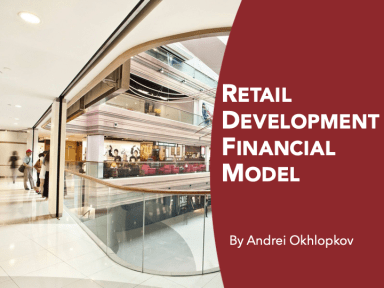
Last version published: 18/09/2023 08:33
Publication number: ELQ-72919-2
View all versions & Certificate

Retail Property Development Financial Model
A professional model for retail construction (build – hold – sell)
Further information
Calculate future cash flows, returns and sensitivity for the construction of a retail property
Use this model if are considering an investment into a development of a retail property.
Every investment is unique and so the model might need to be adjusted to your situation. Contact me if you need help tailoring this model or developing a new one.

























